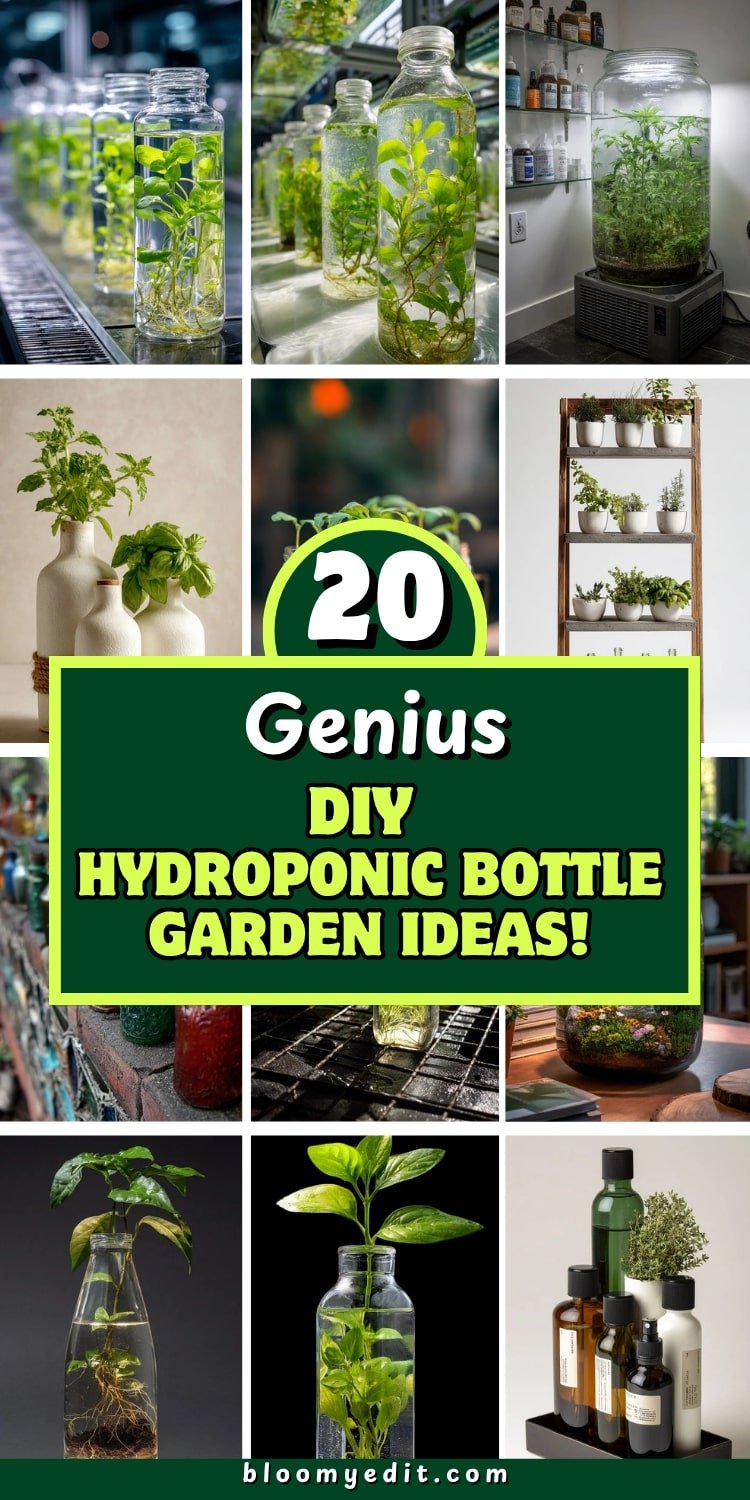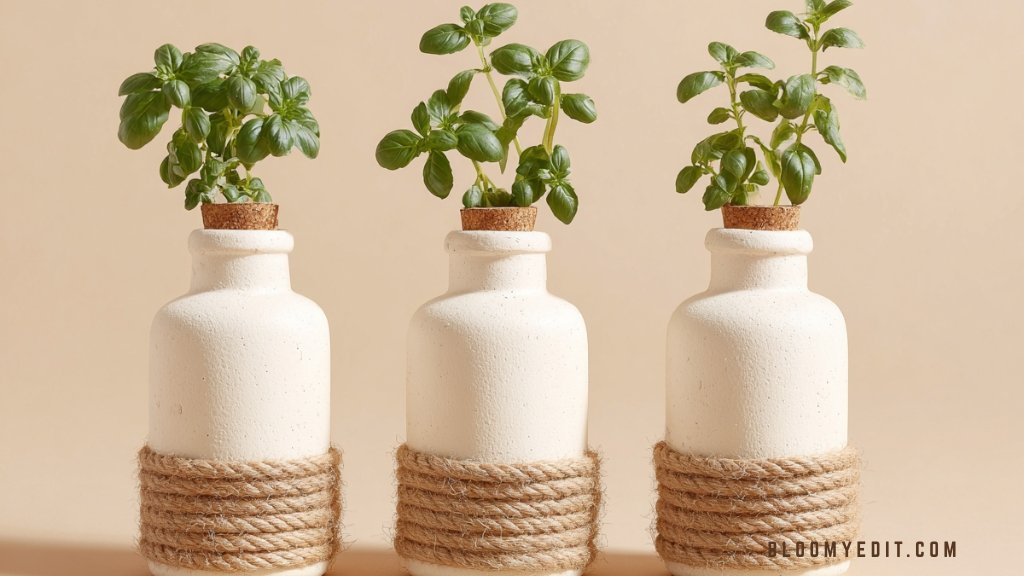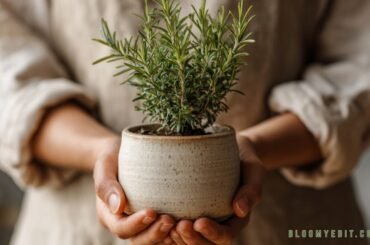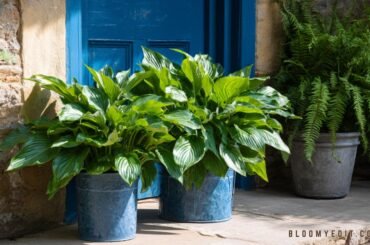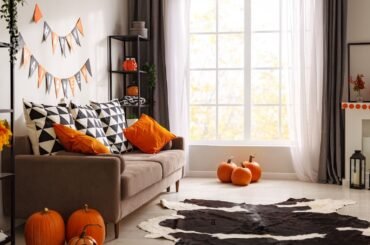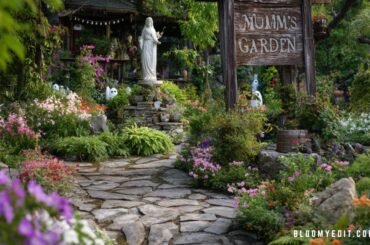It probably started with a leftover plastic bottle and a spark of curiosity. You looked at it and thought, Could I actually grow something in this? Fast forward a few clicks down the internet rabbit hole, and suddenly you’re eyeing every empty soda bottle like it’s a future lettuce farm. Welcome to the strangely satisfying world of hydroponic gardening, DIY style.
There’s something undeniably cool about watching plants thrive without a speck of soil. No backyard? No problem. No fancy setup? Even better. With just a few bottles, some water, and a little know-how, you can grow herbs, greens, and even strawberries on a windowsill, balcony, or kitchen counter.
This isn’t about perfection. It’s about experimenting. Learning. Turning “trash” into something fresh, green, and alive.
So if your hands are itching to build something and your space is craving a little more green, you’re in the right place. Here are clever, doable, and totally satisfying 20 DIY Hydroponic Bottle Garden Ideas to get your plants (and your creativity) growing.
1. Root-Forward Plant Displays
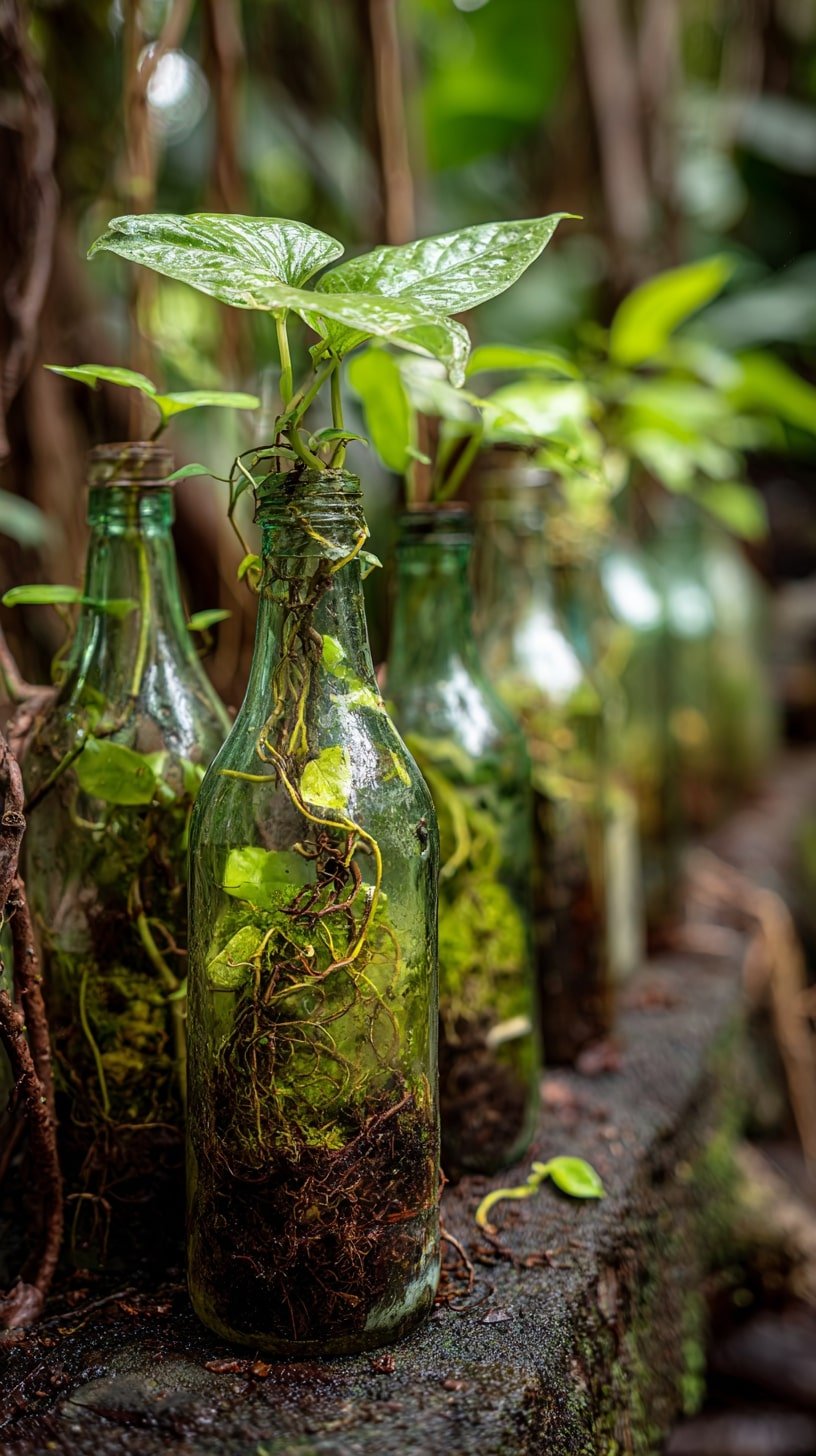
Clear glass bottles transform common cuttings into tiny green sculptures. Vines spiral downward, leaves stretch up. Every part of the plant feels alive, on display.
Use uniform bottles to keep rhythm. Slight color tints add depth, not distraction. Place along a low wall for eye-level viewing.
2. Low-Maintenance Water Gardens
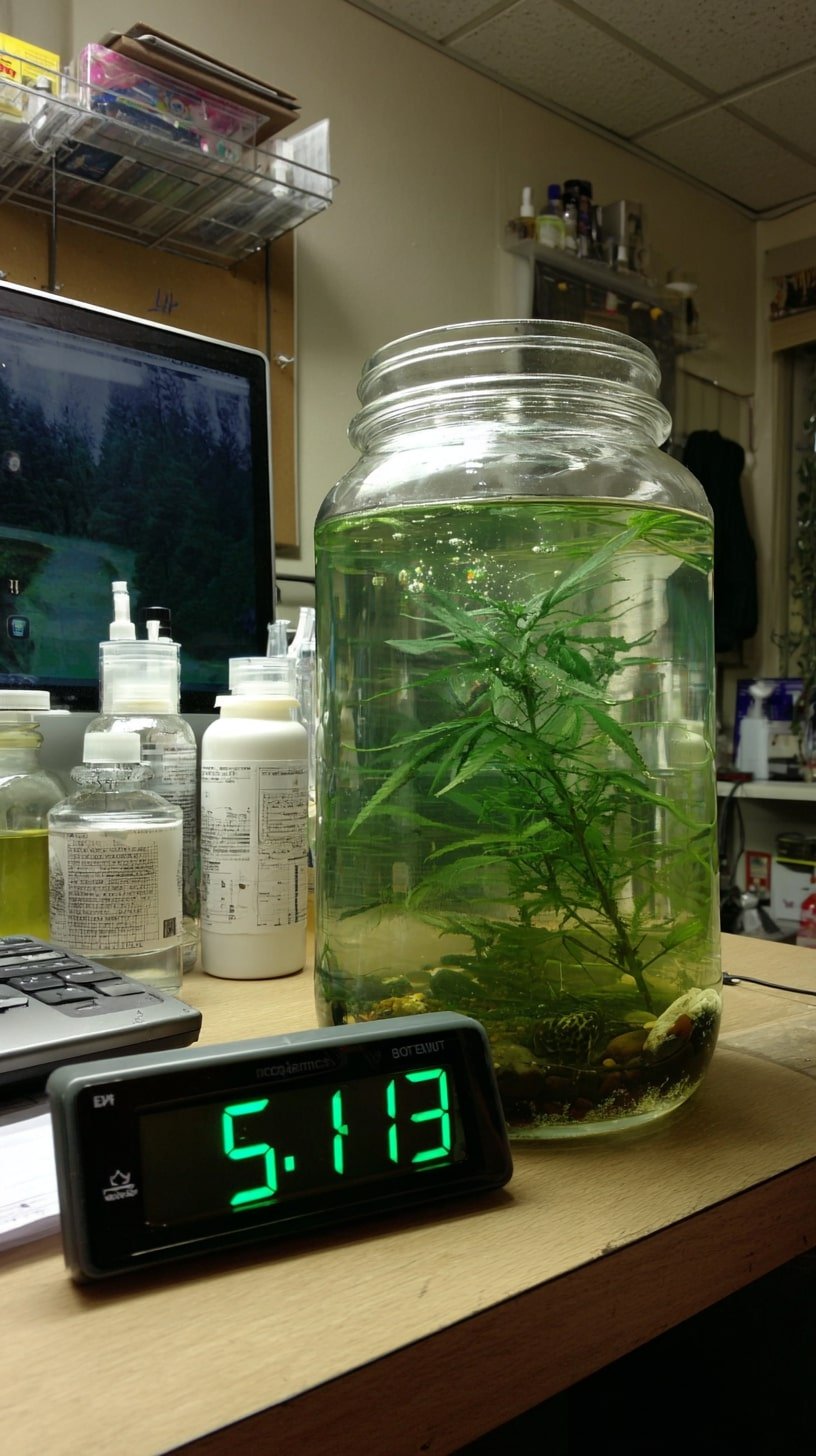
A wide-mouth glass jar works as a self-contained aquatic planter. Great for desktops. Or tucked beside a sunny windowsill. Watch every stage.
Roots trail freely, oxygen bubbles cling to leaves, gravel anchors it all. No pumps. No cords. Just still water, light, and patience.
3. Climate-Controlled Jar System
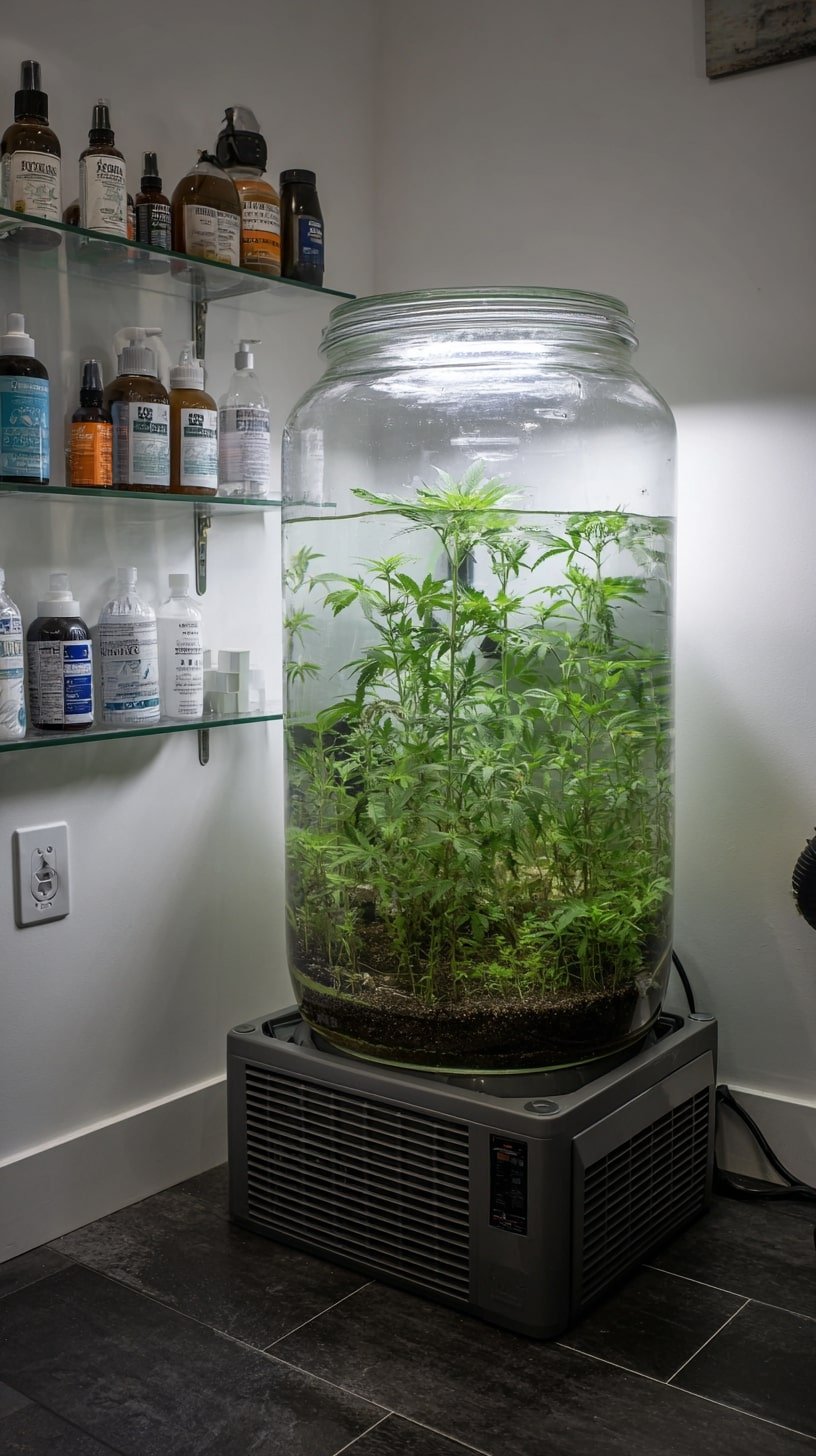
This setup blends precision and simplicity. A giant glass jar acts like a micro-ecosystem, giving roots space to spread while keeping visuals crisp. Light diffusion across water amplifies green tones.
The jar’s perched on a temperature-regulating base, likely for root-zone stability. Shelves nearby? Packed with nutrient solutions and pH adjusters.
4. Line a Ladder Shelf with Bottles
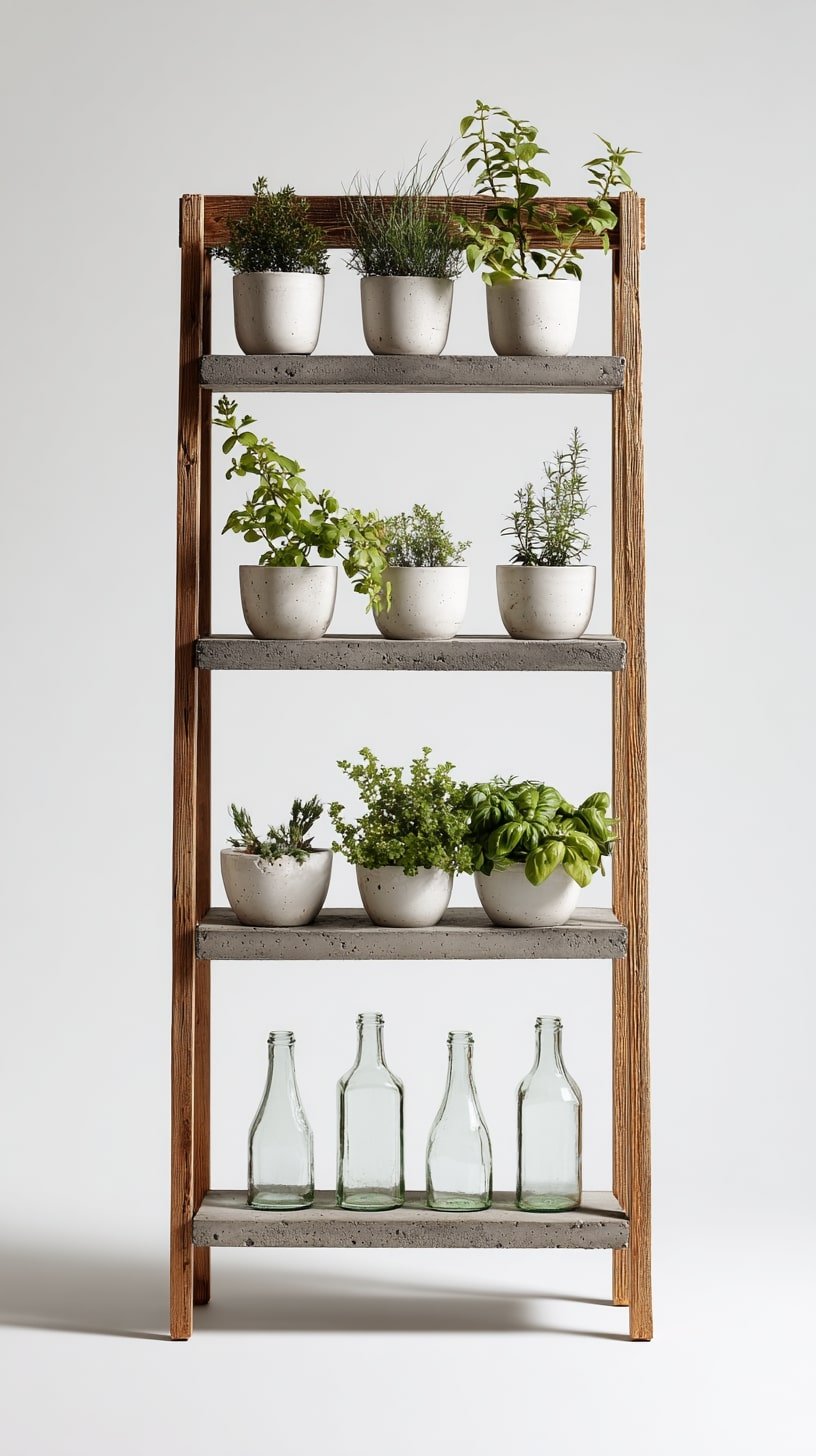
Just rhythm and repetition. Glass bottles stretch across the bottom shelf like test tubes waiting for life.
Neutral ceramics above create visual balance while the wood-and-concrete frame anchors it all. Beginners, cuttings can root directly in water. Once stable, just rotate up.
5. Root Growth a Lit Bottle Base

This setup puts them on display, using a clear bottle and integrated base light to turn biology into sculpture. You see every strand, every tiny hair. Water clarity matters here.
No soil distraction, just the clean drama of suspended life. It’s technical, yes, but poetic too. An elegant way to learn and show.
6. Uniform Bottles for Clean Hydro Growth
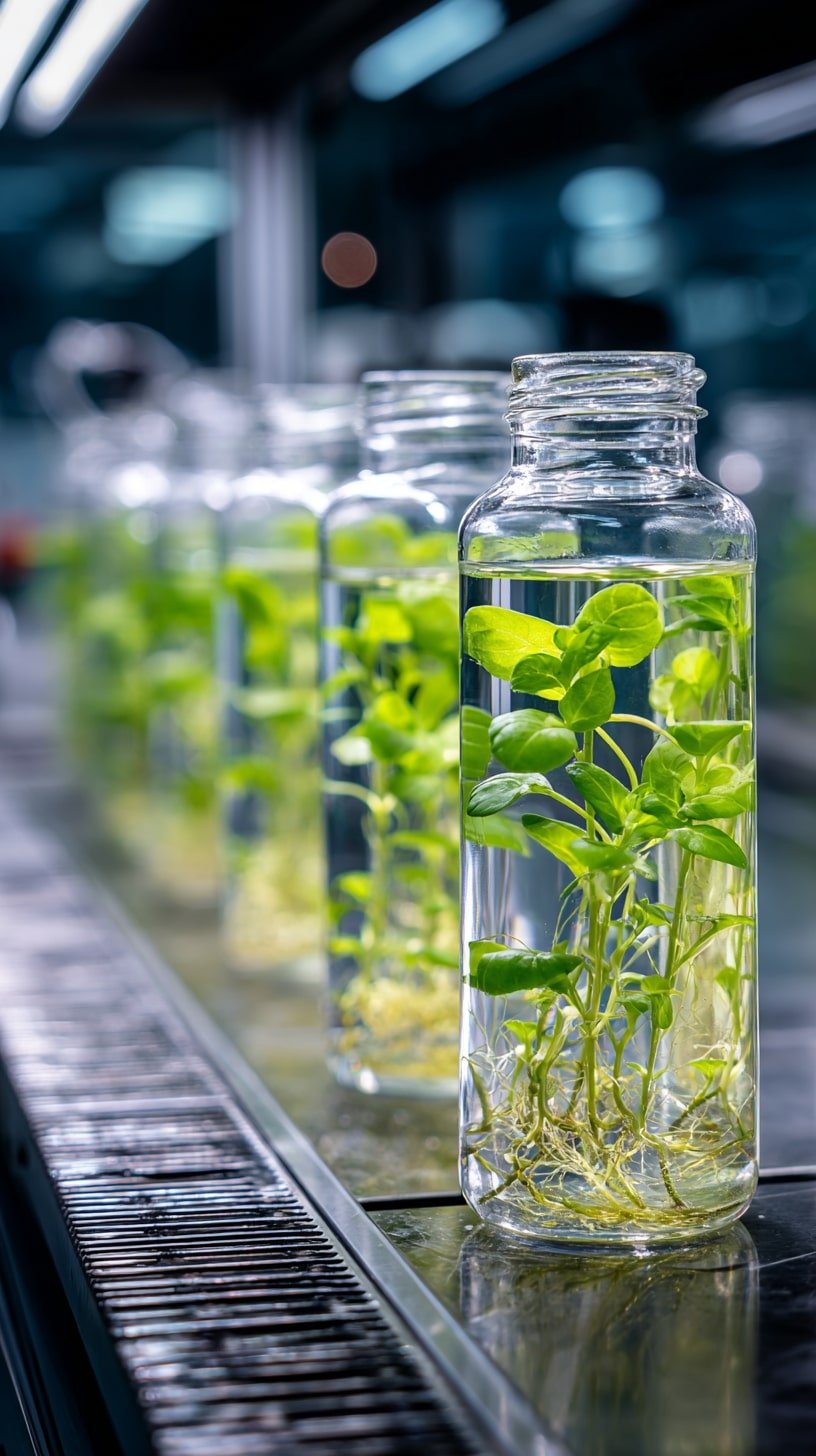
Identical glass bottles arranged in sequence offer symmetry and clarity. No clutter. Just healthy greens suspended in water, roots fully visible, thriving in pure light.
It’s systematized, almost lab-like, yet still beautiful. The repetition calms. Great for tight shelves or counters where order matters.
7. Lit Base for Visual Depth
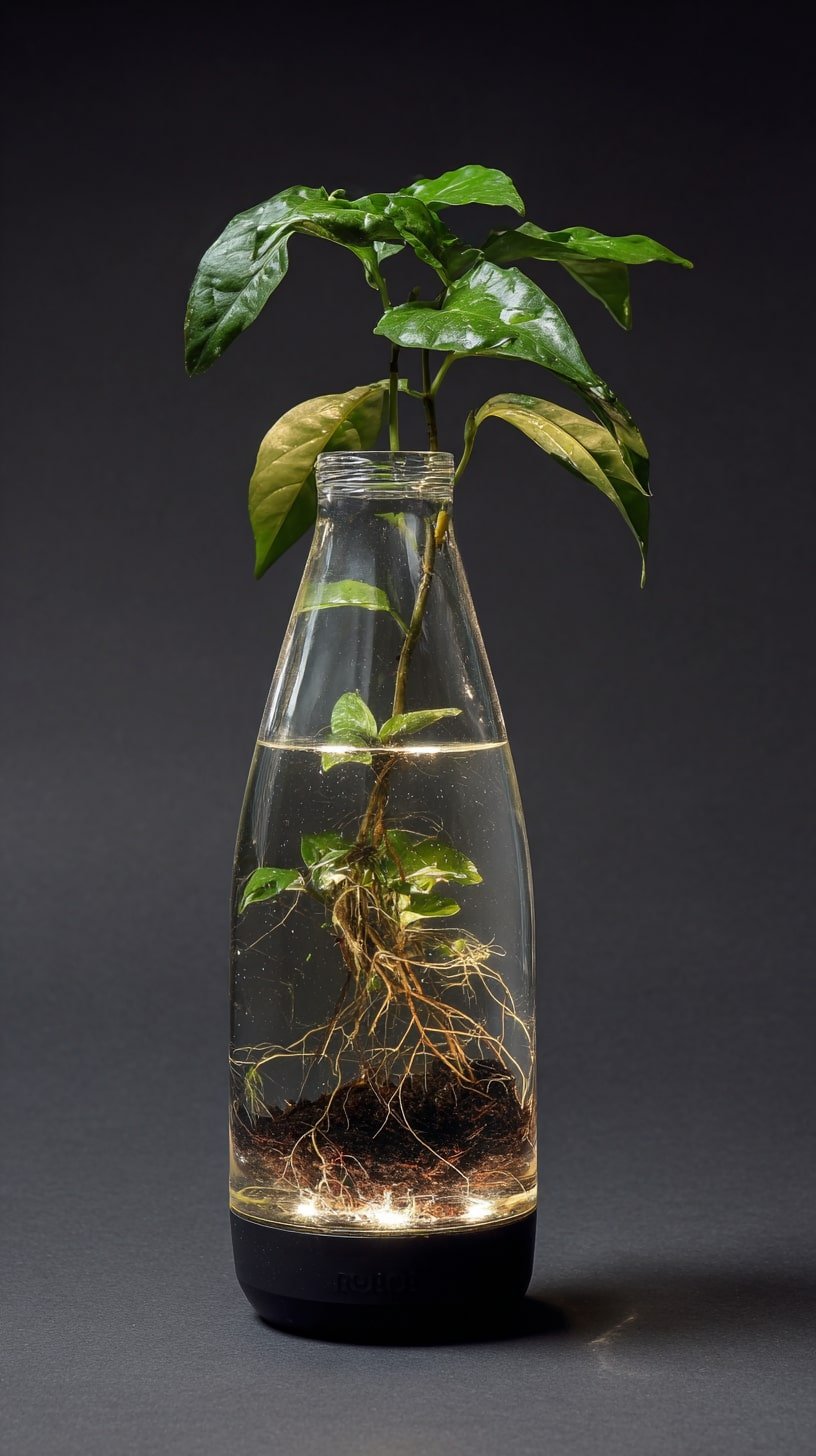
Light integrated into the base draws focus downward, where roots twist in suspension like living sculpture.
The glass bottle narrows near the neck, amplifying verticality, making each layer, water, roots, stem, read like a cross-section. Soil is minimal. Growth feels almost scientific.
8. Line Up Cut Bottles for a Bright
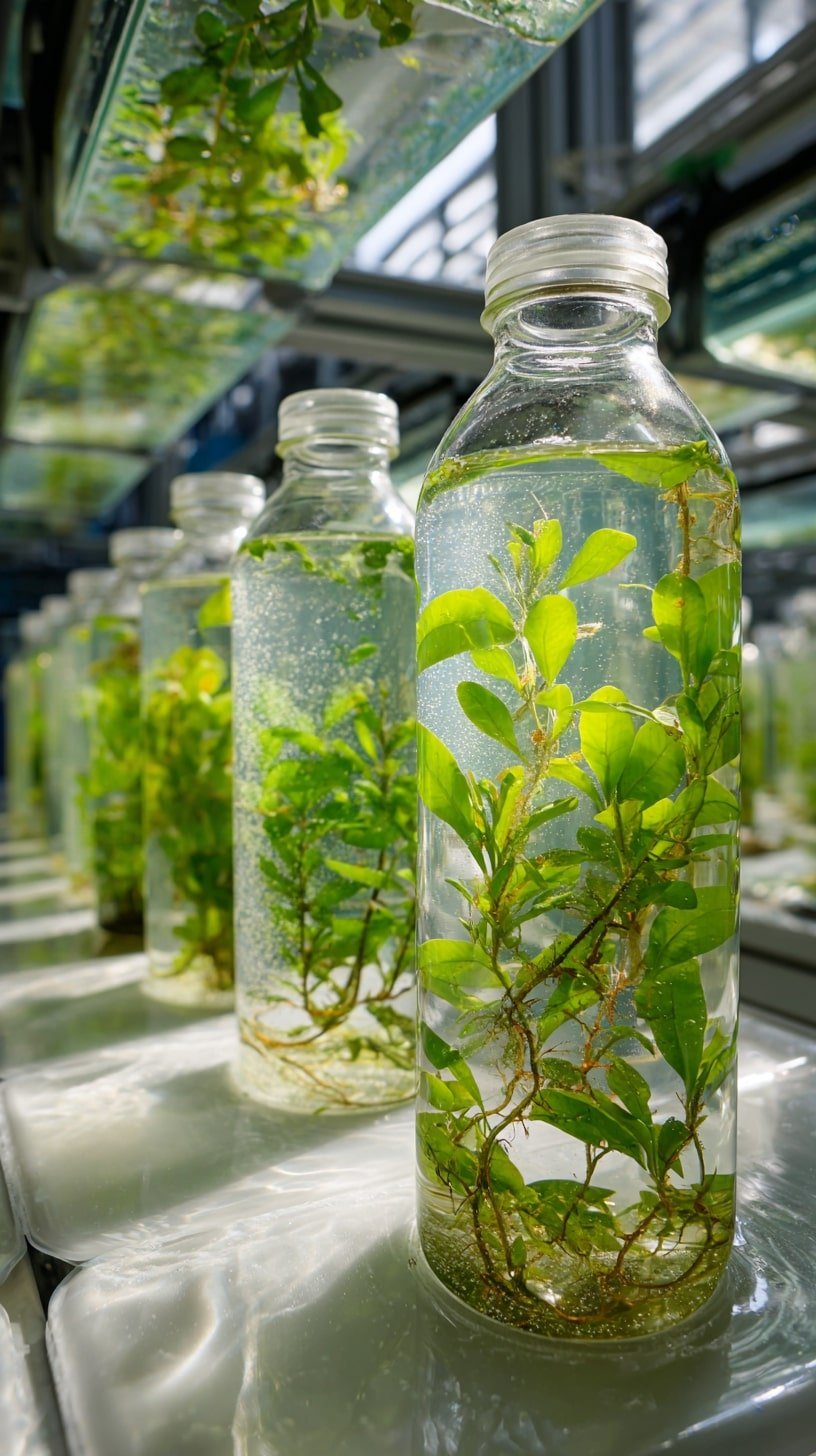
Rows of glass bottles, identical in shape, packed with lush green cuttings. Each one a mini hydro capsule. Bubble streams and ambient light bounce off the water, creating a glowing, almost laboratory feel.
Consistency is key here, height, volume, exposure. Setup for herb starter greens where visibility and sunlight matter as much as nutrients.
9. One Cutting in a Thick-Glass Display Jar
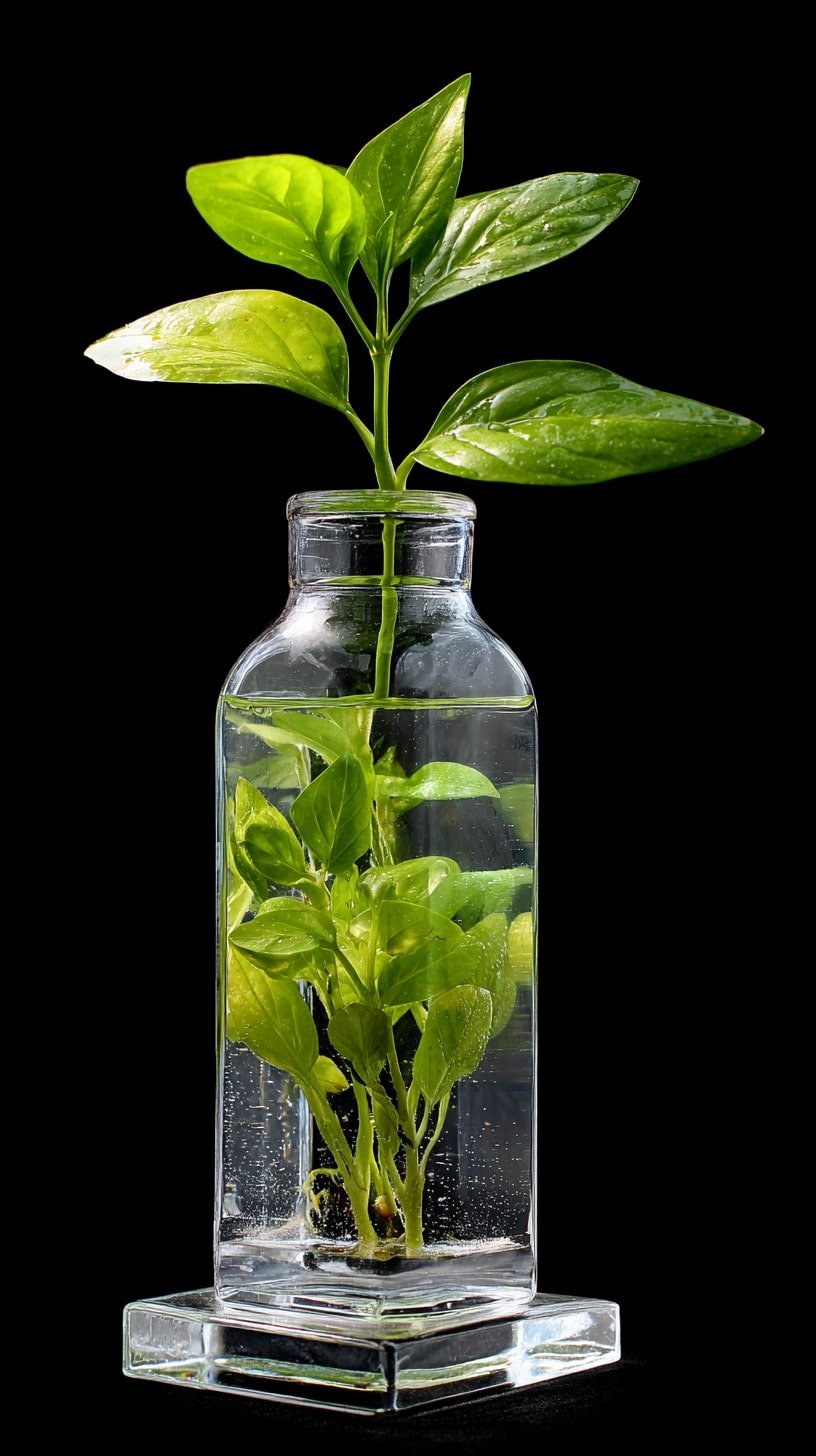
Thick glass walls and sharp square lines turn a simple hydroponic setup into a striking focal point. No clutter, no layering. One vibrant plant sits suspended in clear water, roots visible like tangled threadwork.
The black backdrop? Smart move. It punches up contrast and puts all the emphasis on form, color, and clarity.
10. Apothecary Bottles for a Minimal Herb Cluster

Surprisingly effective. Grouping apothecary-style bottles gives strong rhythm and a compact vertical layout.
Dark glass offsets the clean label design, while that one burst of green, fresh thyme, probably, adds life without shouting. These aren’t typical hydroponic jars, but they nail form and scale.
11. Layered Moss and Rock
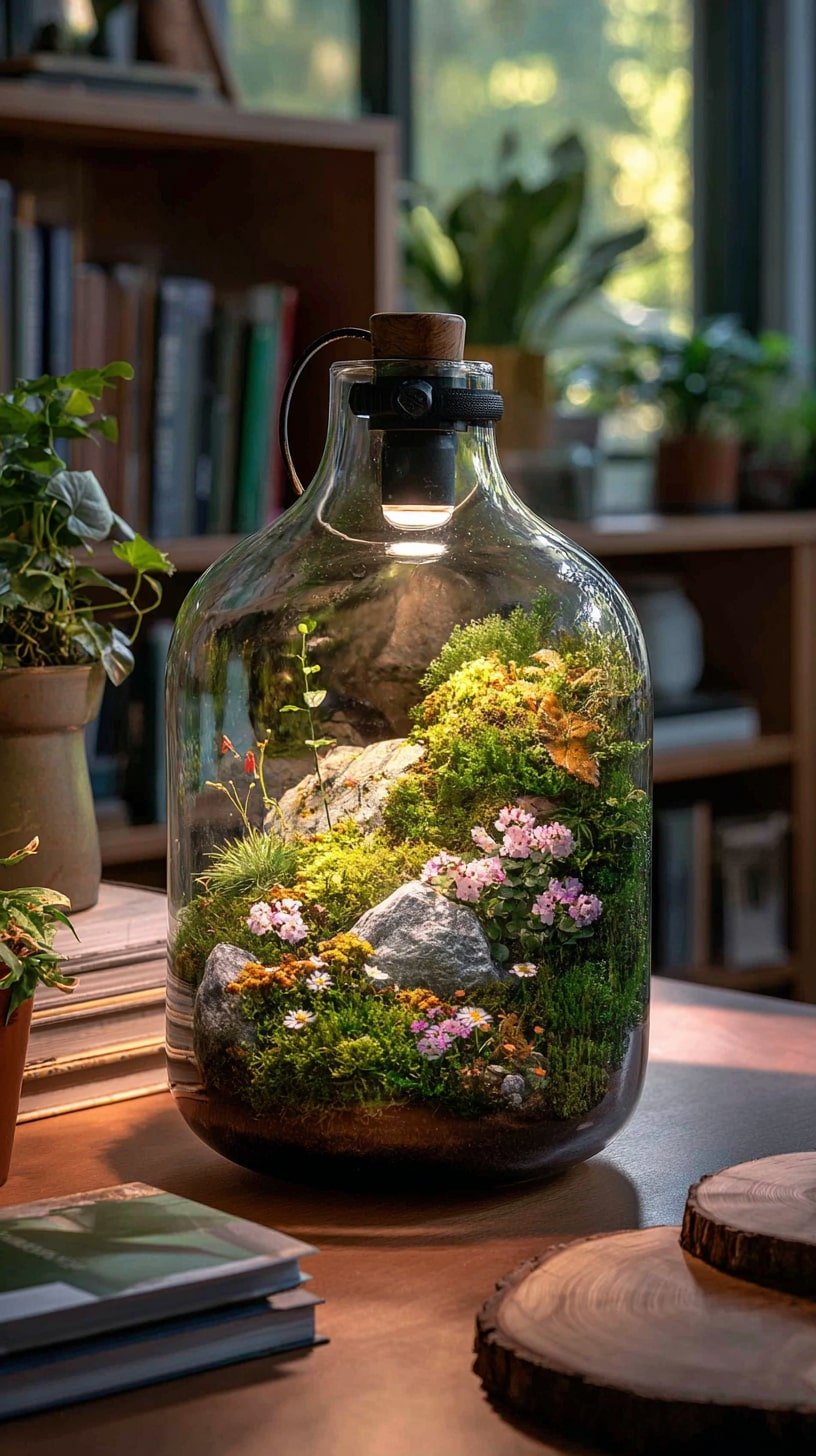
A whole world inside. This design leans terrarium, but the layering still channels hydroponic logic, clear sides, visual root zones, controlled light.
Pebble base supports drainage, moss adds humidity control, and that angled rock stack shapes a microterrain. Top light elevates form and function.
12. Rustic Twine Around Painted Bottles
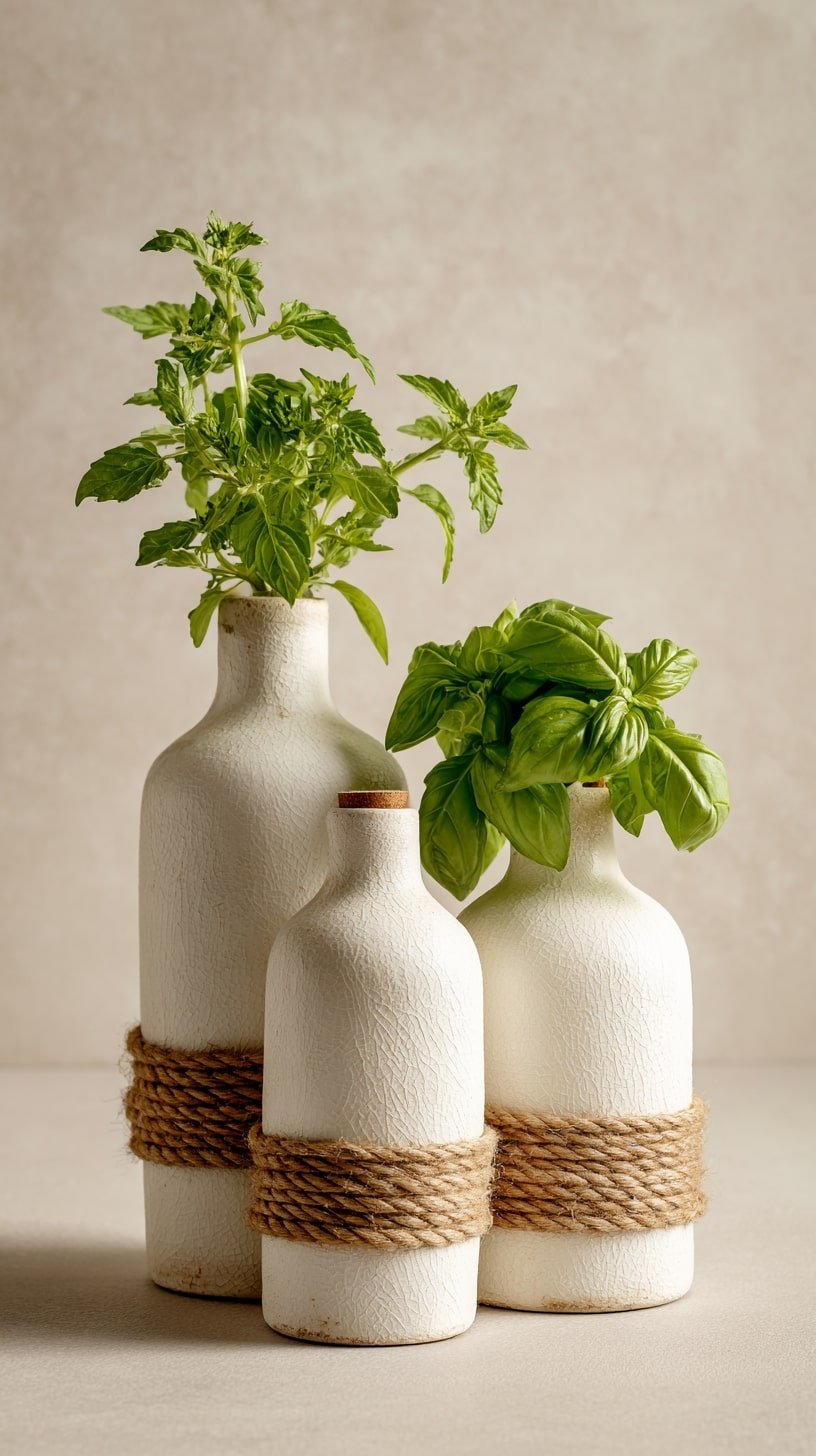
Chalk-white ceramic paint gives each bottle a matte, timeworn surface, just rough enough to feel handmade. Twine belts provide grip and rustic warmth. Clustered shapes play off one another.
Three heights, one tone. Perfect for basil or mint. Works hydroponically too, just tuck roots into water inside.
13. Garden Wall with Vintage Bottles
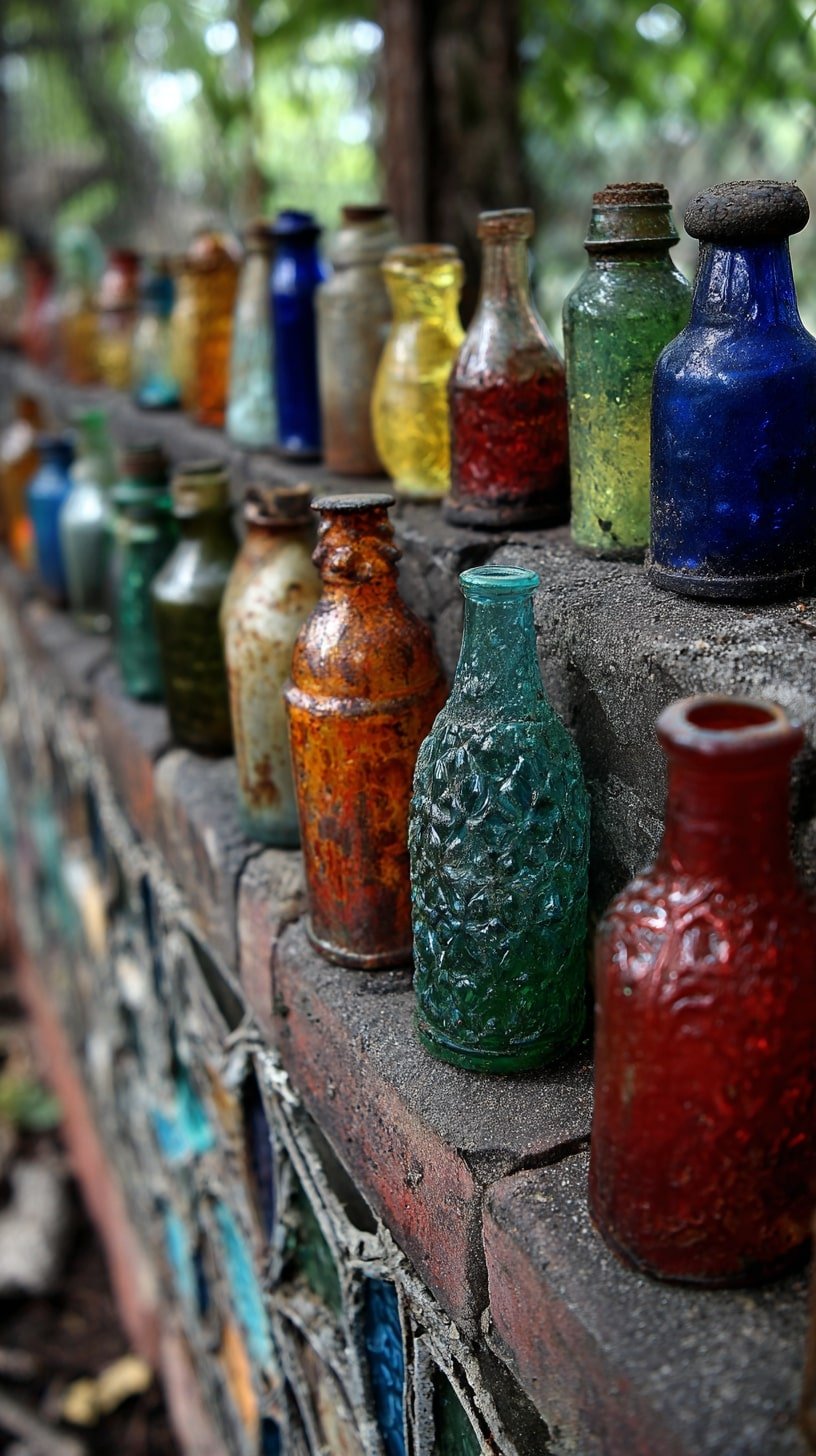
Old glass bottles transform into a textural design element, not just planters. Rich jewel tones, cobalt, amber, moss, pop against rough concrete.
Shapes vary, which matters. Slim necks, chunky curves, embossed sides. It’s tactile, imperfect. Each bottle feels handpicked. Use as mini hydroponic grow jars.
14. Slim Shelves with Matching Pots

This frame racks up function with zero fuss. Repeating white pots unify the look, making the greenery stand out. Heights vary just enough.
Hanging chains on the top row pull the eye up, adding air. Good bones too, narrow footprint, metal frame, sunlight-friendly layout.
15. Root Fresh Herbs in Glass Jars
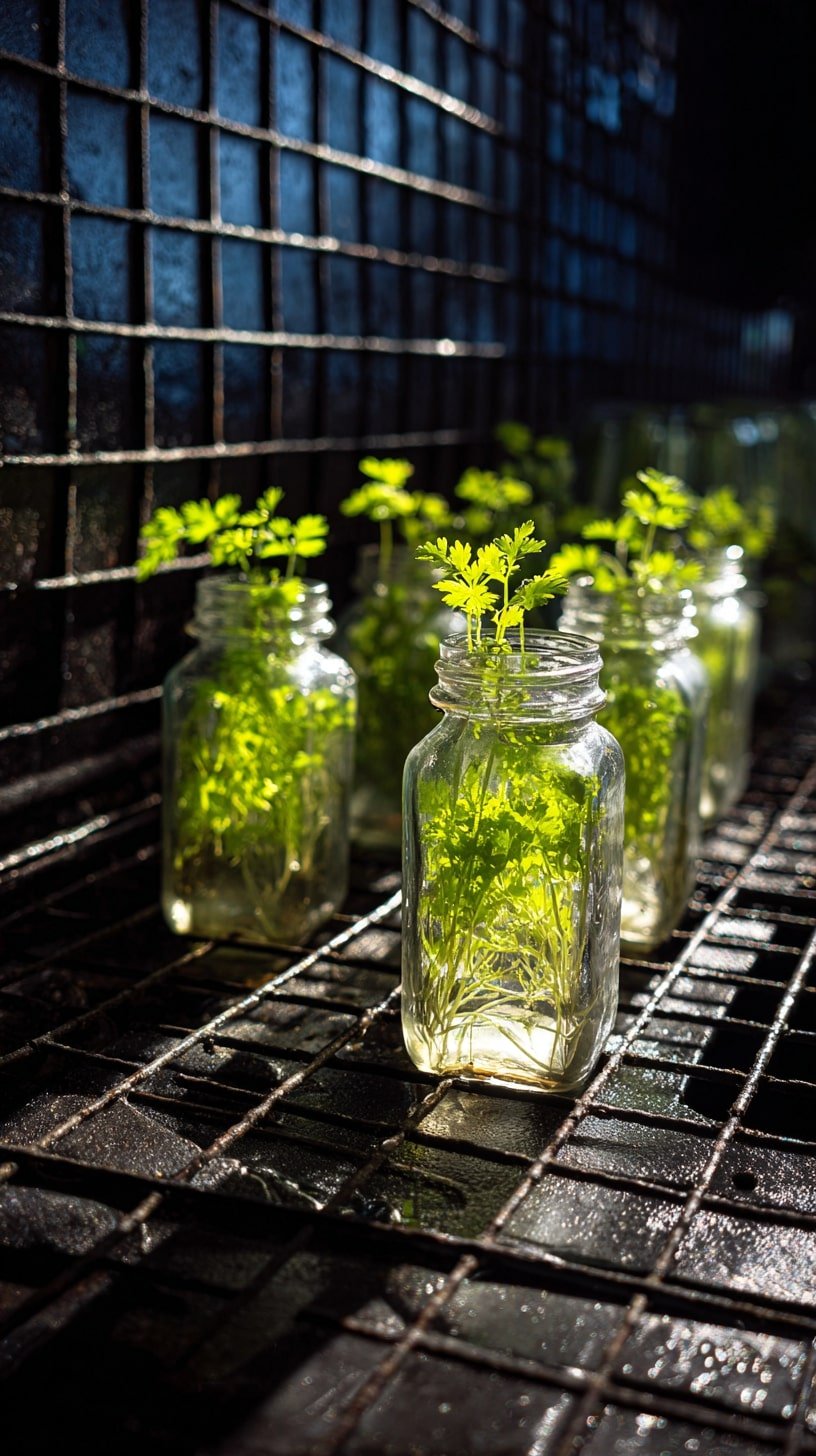
Clear jars show root systems in real time, letting you track water clarity and nutrient uptake without digging. No soil, no mess.
Just sprigs and water. Light bounces cleanly off every surface, glass, tile, foliage, amplifying freshness. Tight kitchens or balconies where control and minimalism matter.
16. Start Seedlings in Bottles for Compact Growth
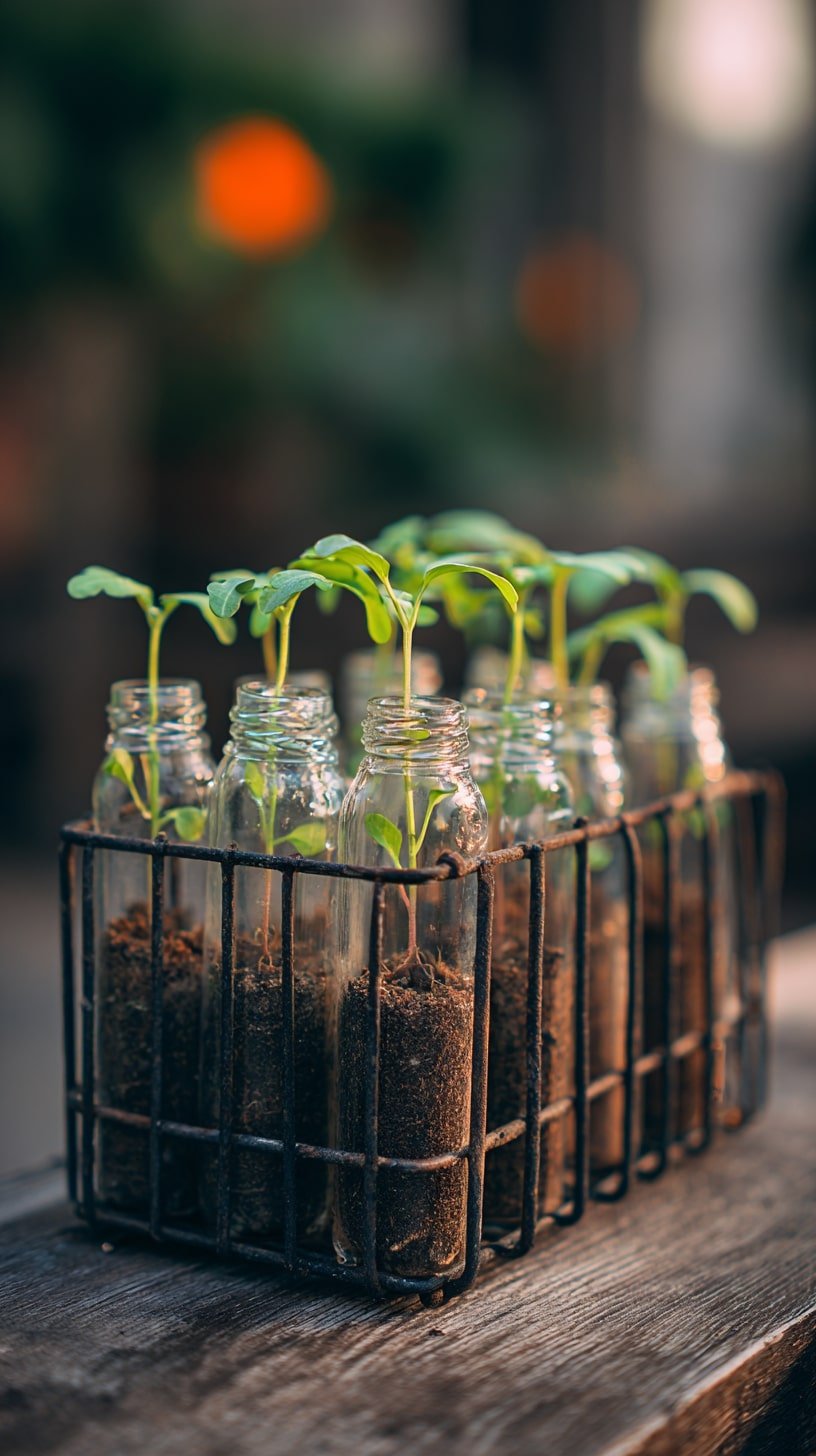
Each bottle holds its own micro-climate. Glass keeps moisture consistent, soil clearly visible, growth easy to monitor. Tracking root development or spotting early issues.
Wire caddy adds structure, keeps everything upright. No crowding. No tipping. This setup feels deliberate, measured, organized, quiet.
17. Airy Herb Storage
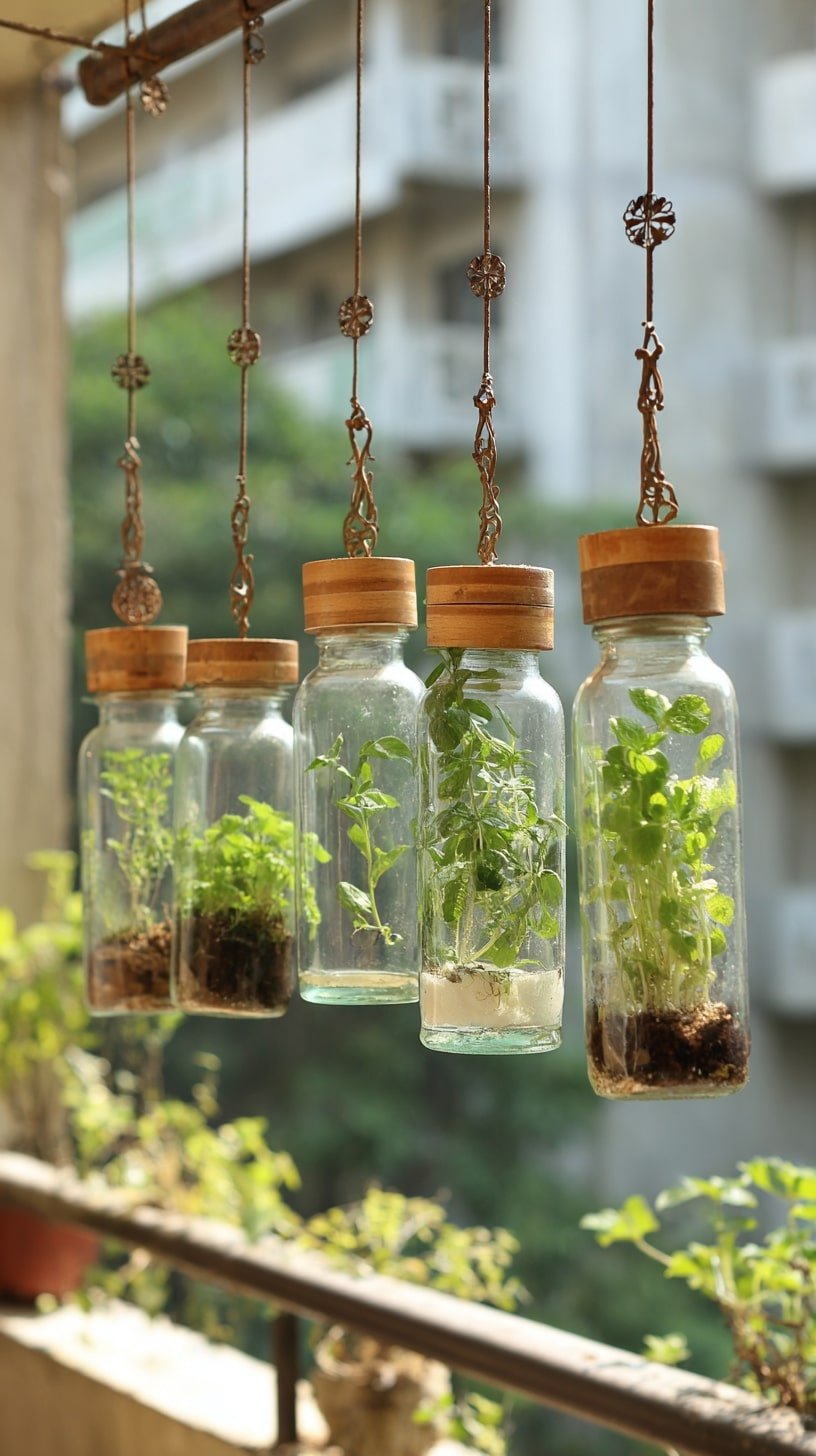
Bright, weightless, efficient. These hanging jars bring hydroponics vertical, using height instead of space. Clear glass lets light flood roots, cork lids keep evaporation in check.
Decorative hooks add charm without stealing focus. The staggered drop feels deliberate, balanced but relaxed.
18. Bottle Rows Against Wood Slats
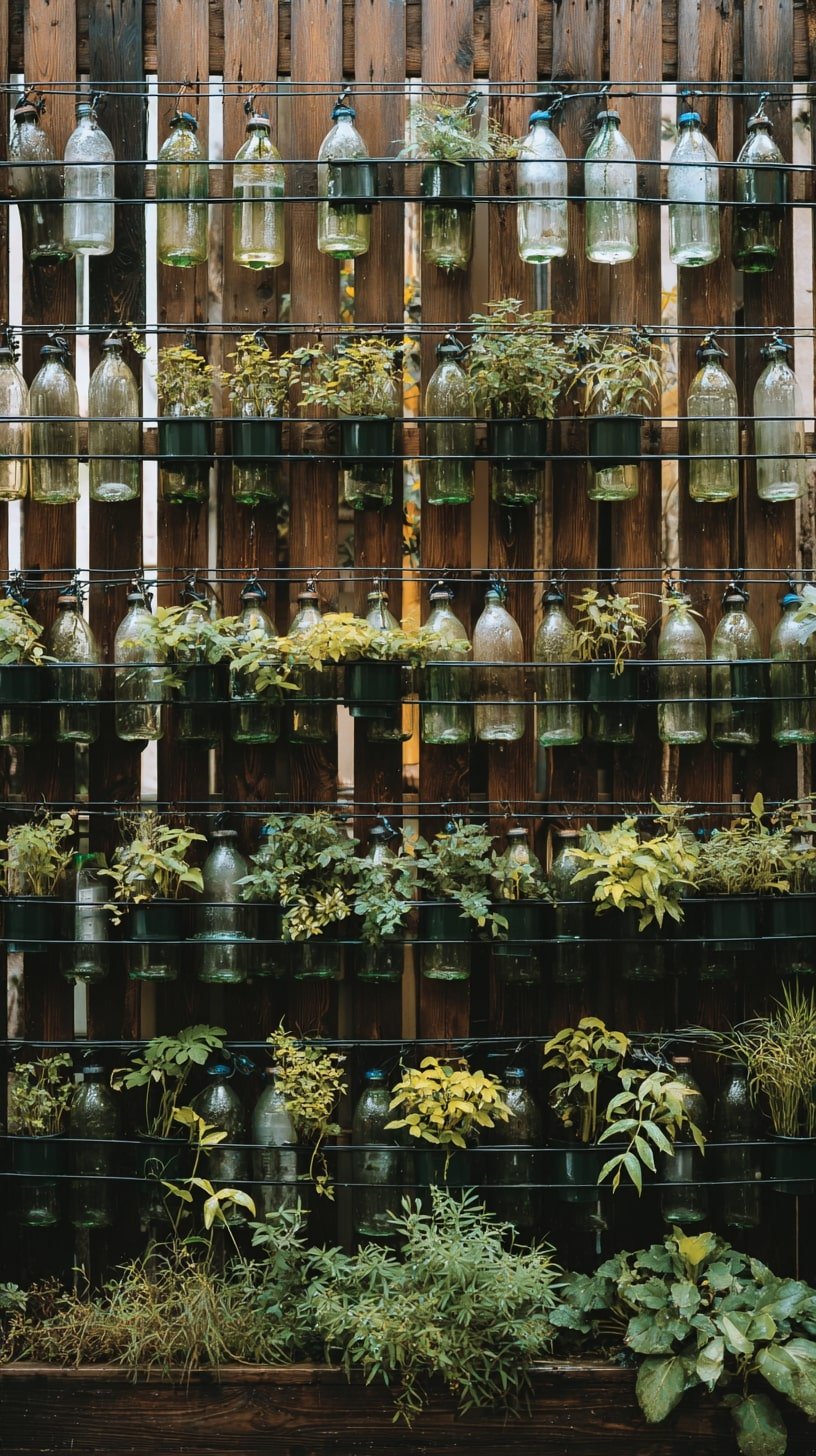
This wall turns ordinary bottles into a full-fledged hydroponic system. Rows stack with intent, five tiers deep, held tight against stained wood slats.
That contrast? Rustic warmth meets recycled clarity. Rubber caps seal necks, plants thrive from top to bottom. Every line feels controlled but not clinical.
19. Float Greenery on a Pallet Raft
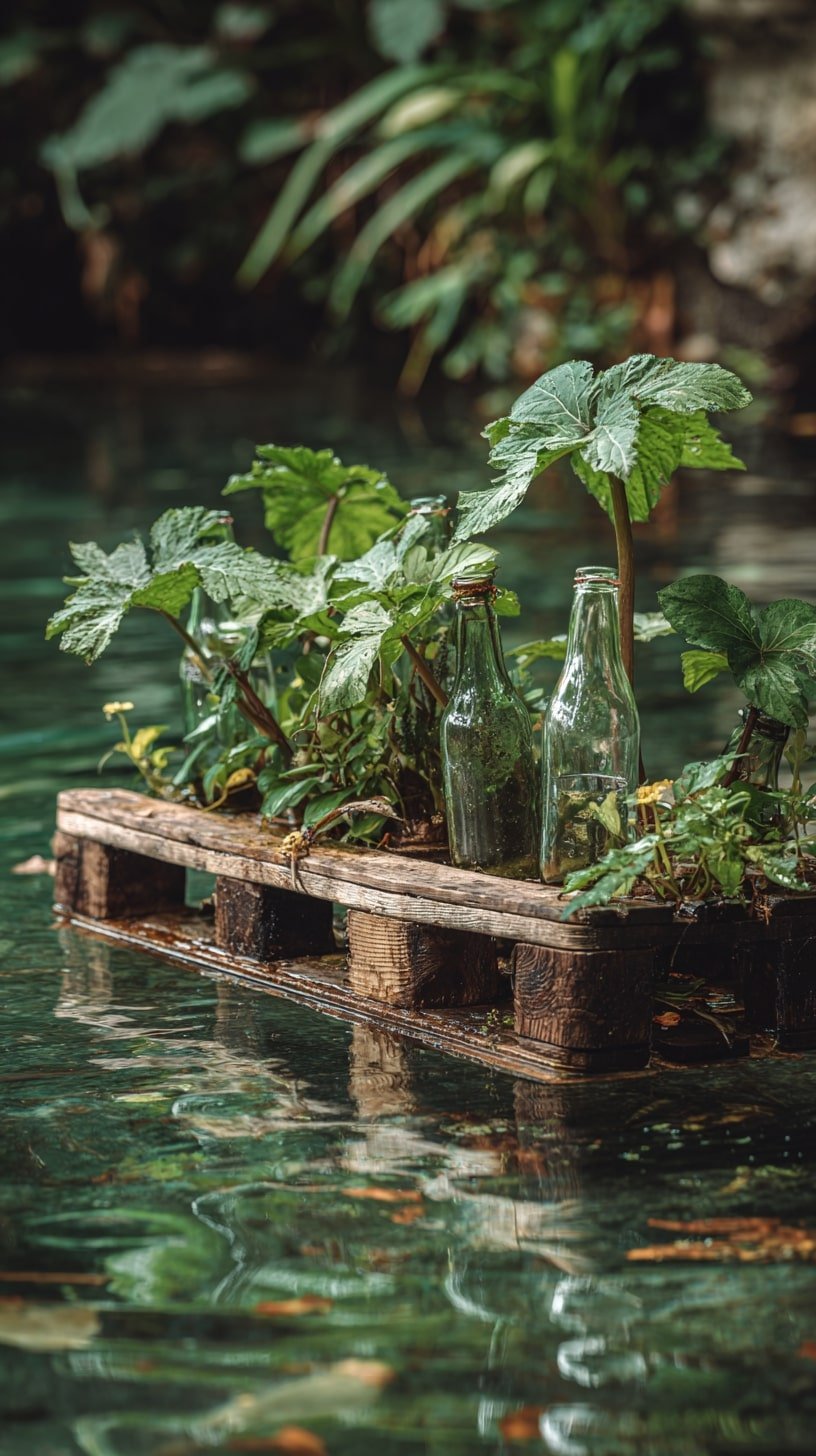
A rustic wooden pallet, semi-submerged, holds a lush mix of leafy plants and reused glass bottles. It floats. Literally.
The setup challenges fixed-location gardening, blurring lines between land and water. Mossy stems, wet wood, overgrowth spilling out. It’s chaotic in a good way.
20. Floating Pallet for Wild-Edge Appeal
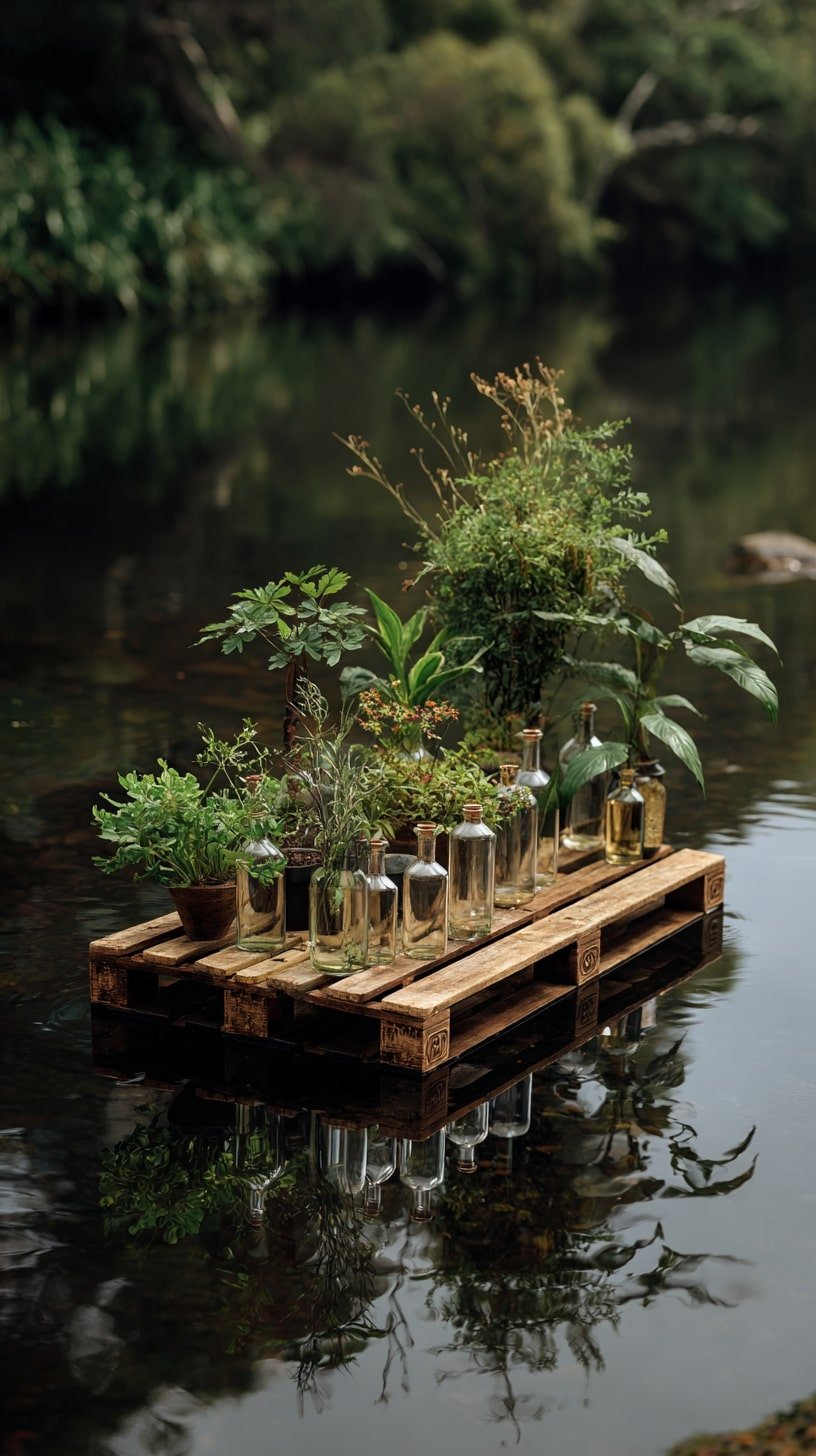
A wooden pallet floats low on calm water, topped with mismatched glass bottles and deep-green herbs. Mint, perhaps basil, maybe something flowering. No visible hardware, no borders, nature held by water tension.
Minimal construction. Maximum poetry. A floating grow station like this makes a striking, eco-conscious centerpiece for backyard ponds or slow streams.
